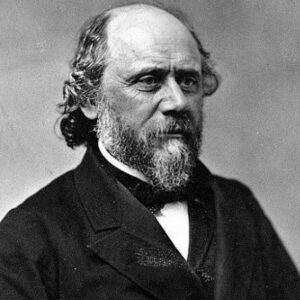Richard Henry Dana Jr. was one of those talented individuals who were simply too progressive for his time. He was a well-known novelist and attorney. He bestowed upon us one of the most amazing works of art that have inspired awe in centuries of people for the beauty of the sea. He represented the underprivileged as a lawyer, particularly the sailors who could not understand the complexities of the legal system. He was a fervent opponent of slavery and exerted all effort within his power to see that the social ill of slavery was eradicated. Despite growing up in a very wealthy family, he never lost sight of the plight of the average person. He was, in essence, a very good human being who was a devoted friend and family man. When he looked back on his arduous journey to California, he stated that, despite failing at everything else he tried his hand at, he had been extremely blessed while traveling. He wished to be known as the author of “Two Years Before the Mast.” His true dedication was to the practice of law, where he eventually found success but utterly failed in politics. He lacked the crudeness and charm necessary to run effective political campaigns. He gained the most notoriety for his crusades in defense of runaway black people.
Early Childhood & Life
He came from a family that arrived in America in 1640 and was born in Cambridge, Massachusetts. Both a critic and a poet, Richard Henry Dana Sr. was his father. Under the severe supervision of his teacher Samuel Barrett, he spent his school years in the discipline.
He began attending a different private school run by Ralph Waldo Emerson in 1825. He was a pretty kind teacher, but Dana said he lacked a mechanism of punishment.
In July 1831, he subsequently enrolled at Harvard College. He participated in a demonstration during his first year of college, which led to a six-month suspension. His vision deteriorated when an ophthalmia diagnosis was made.
In an effort to regain his vision, he intended to embark on a maritime cruise. Despite having the opportunity to sail in style thanks to his privileged upbringing, he chose to enlist as a seaman.
The ship “Pilgrim” sailed for California in August 1834. After two years, Henry returned in September 1836 a different man. Despite traveling for the purpose of curing his vision, he returned having gained a fresh perspective on life. He returned to Harvard right away and earned his degree in June 1837.
Richard Dana’s Career
In 1840, he was admitted to the bar. He chose maritime law as his area of expertise. He began to feel a certain sympathy for the seamen and made the decision to assist them in a legal manner. Later, he gained the moniker “Seaman’s Champion.”
His most illustrious novel, “Two Years before the Mast,” was released in the same year. It was a description of his journey to California.
He authored “The Seaman’s Friend” in 1841, which detailed all of a sailor’s legal rights and obligations. Later, sailors all across the world used this as their primary reference.
He became a fervent opponent of slavery after joining a movement to end it, whether it was legal or not. In 1848, he was a founding member of the anti-slavery Free Soil Party. In 1854, he appeared on Anthony Burns’ behalf in Boston. He was also attacked in Boston’s streets for backing the anti-slavery cause.
Dana visited Cuba in the late 1850s when the United States was debating whether to annex Cuba, which was under Spanish occupation. To Cuba and Back, a book on his visit to Cuba was published in 1859.
He held the position of United States Attorney during the American Civil War and triumphed before the Supreme Court in the well-known “Amy Warwick” case to restrict the Confederate ports.
From 1867 to 1868, Dana served in the Massachusetts legislature. Due to allegations of plagiarism for a work he had edited, his candidacy as an ambassador to Great Britain in 1876 was rejected by the Senate. Despite being declared innocent, his reputation was damaged.
In 1877, he served as one of the United States government’s counsel members.
Richard’s Bigger Works
The 1840 book “Two Years before the Mast” is regarded as a masterpiece. It is among the most well-known depictions of maritime life in America. The account of life in California prior to the Gold Rush is distinctive and in-depth. The book discusses the many coastal stops that were made, including Monterey, San Pedro, San Diego, etc. Additionally, it gives a detailed account of the sailors’ daily lives and jobs.
The Seaman’s Friend, which was first published in 1841, served as the go-to source for any legal inquiries regarding a sailor’s dos and don’ts. The supreme authority on a seaman’s legal rights and obligations for a very long period.
Personal Legacy & Life
In 1841, he married Sarah Watson. In addition to Richard Henry Dana III, who was a lawyer and reformer, they had four daughters.
In 1878, he decided to stop practicing medicine and devote the rest of his life to travel and research. He relocated to Rome with his family in 1881 to conduct research for his writings.
Dana, who passed away from influenza in Rome at the age of 67, is interred with authors like Keats and Shelley in the city’s Protestant Cemetery.
A replica of the brig “Pilgrim,” which he sailed around Cape Horn, has been on permanent exhibit in the Ocean Institute in Dana Point, California, which is on the Pacific Coast. Dana Point was named in his honor.
Richard Henry Dana Elementary School in Dana Point, California, and Richard Henry Dana Middle School in Arcadia, California, are two of the schools that bear his name and are located around the nation.
Estimated Net Worth
Unknown.


